While there was still some rain, I really loved going into the gardens. I thought the QR code scavenger hunt was such an engaging way to both explore and enjoy the gardens. While we were looking for the QR codes, the trip to the gardens was not all about completing the “collection.” The hunt meant we explored all corners of the garden and looked at the nature around us.
This activity made me think of a similar activity to bring into my practicum: maybe a story walk, where QR codes each have snippets of a story and students “collect” them, bring them to the classroom, and piece the collected bits together to complete the story. Beyond classroom education, QR codes let information and resources be condensed. For example, in a poster designed for information or awareness, QR codes can be used to easily like petitions, news articles, or further information.
Throughout this activity, I thought about how technology and the outdoors coexist in my life already. The outcome: a reflection post!
Plant ID
As we’ve talked about previously, our phones have many resources when it comes to identifying nature. I myself have Seek and iNaturalist as apps. I’ve used them when I’ve wondered what a plant is on a walk. I also recently have been using the built-in ID tools in the iPhone’s photo app.
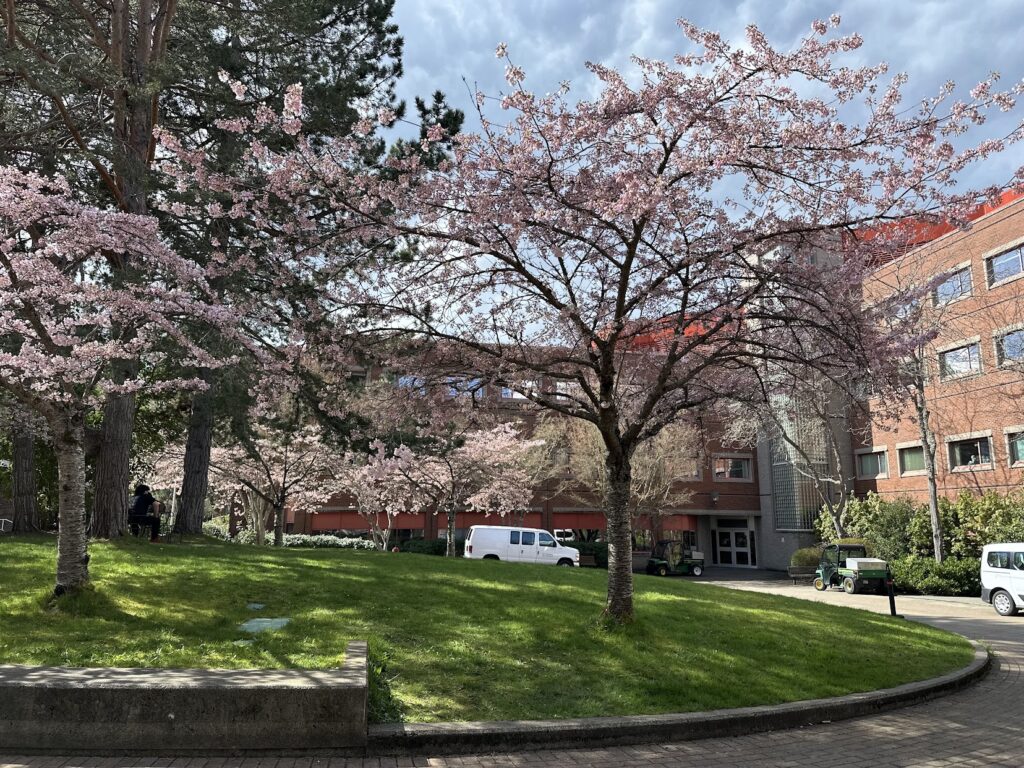
Leaving class one day, I saw that the blossoms had popped! I love blossom season, so I took a photo. Looking back, I wondered if these were cherry, apple, plum, or some other blossom type. Thanks to the ID tools, Apple gave me their guess: Plum!
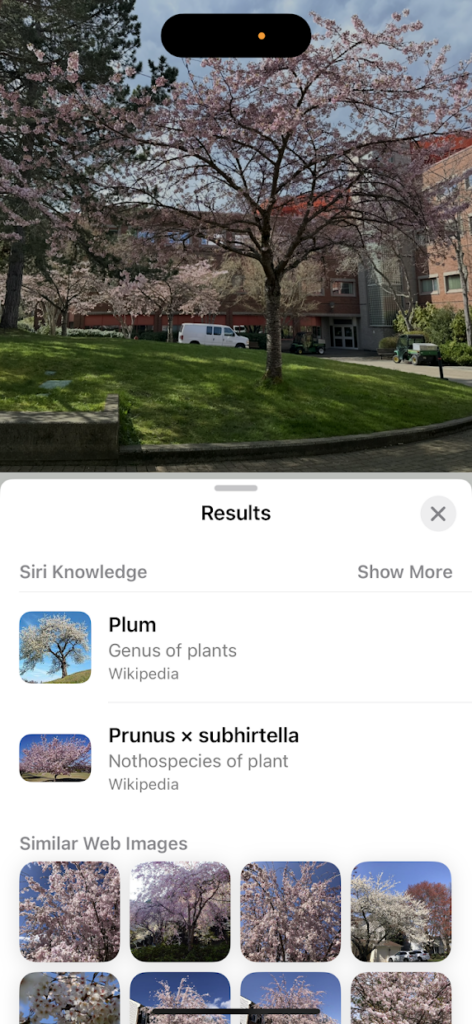
Having these tools in our pockets make it so easy to learn while outside. As well, the photo tools mean we can keep learning when we come home and stay more in the moment while outside. I’ve found learning to ID plants so rewarding; there’s something so comforting about becoming familiar with what’s around us. These ID tools make it that more easy to begin to get to know what’s around us. Even just giving a name makes it that much easier to deepen knowledge later through books, discussions, learning, or more technological explorations!
Bird ID
Another identification app I have recently come to love is Merlin. This is designed for recording the space around us and providing “best matches” for the birds we hear. Then “life lists” can be created from each recording: categorizing what was on each walk, or the total amount of birds listened to.
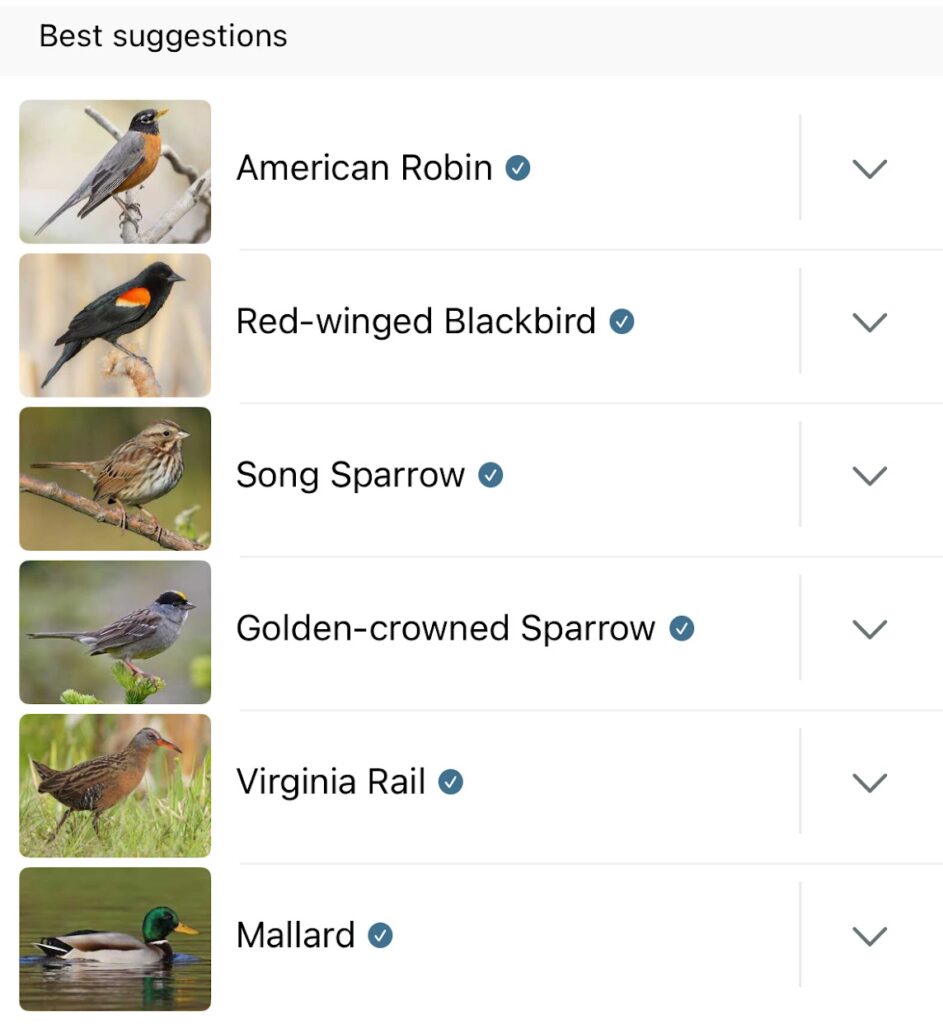
For example, here’s a recording I took at the Swan Lake sanctuary in December, along with Merlin’s list of possible birdcalls heard. Even something as simple as this makes me more aware of the sounds around me. Seeing the diversity of bird calls in one space even helps me practice differentiating and focusing on the sounds around me; instead of hearing “birdcalls” as one united sound, it’s easier now to recognize the different players in the music.
This app also provides information about each species as well as identification. It can be used for learning as well as identification! Imagine all the wonderful possibilities of not only being able to name the birds you’re hearing, but also learning a little about them. A relationship beyond only the name.
Records and Social Media
As I’ve moved back to BC from Ontario, I’ve been trying to take advantage of the mountains and woods around to hike and walk with friends. One tech tool that has helped with both documenting these trips as well as discovering more locations is AllTrails. On AllTrails, you can search for outdoor experiences near you and see photos, updates, reviews, and other people’s experiences. I’ve found it helpful for choosing a hike, as you can sort by difficulty and other filters.
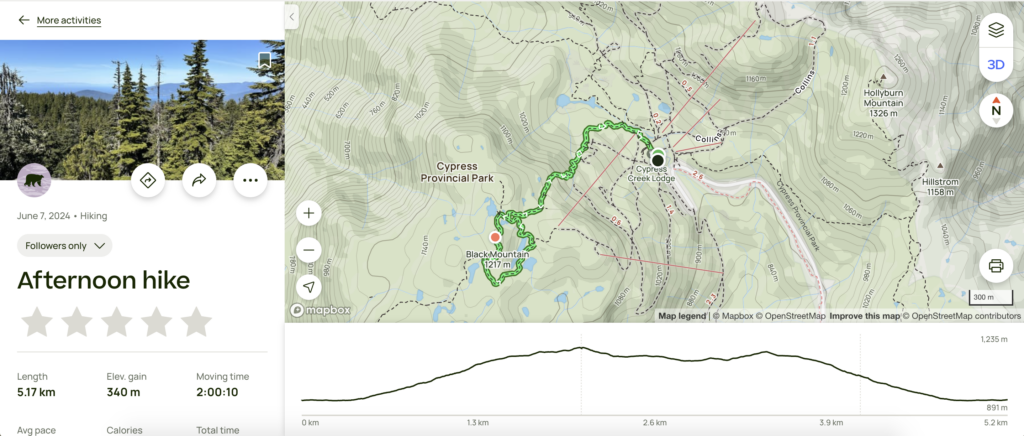
I also loved how AllTrails can record your hike: like distance, elevation, time. I’m someone who likes keeping memories through records, so any app that documents and keeps what I do is something I enjoy. Now, I can look back and see all the cool places I’ve been! The information and community on AllTrails is also a plus—it can be used as a social media of sorts if you’d like too.
Memories and Details
The most obvious technology and outdoor combination is photos. Tech allows us to keep stored records or documentation of what we find when we’re outside while making sure we leave no trace. As well, these records can help document what species are in an area in a particular time (as photos on phones are usually location and time stamped).
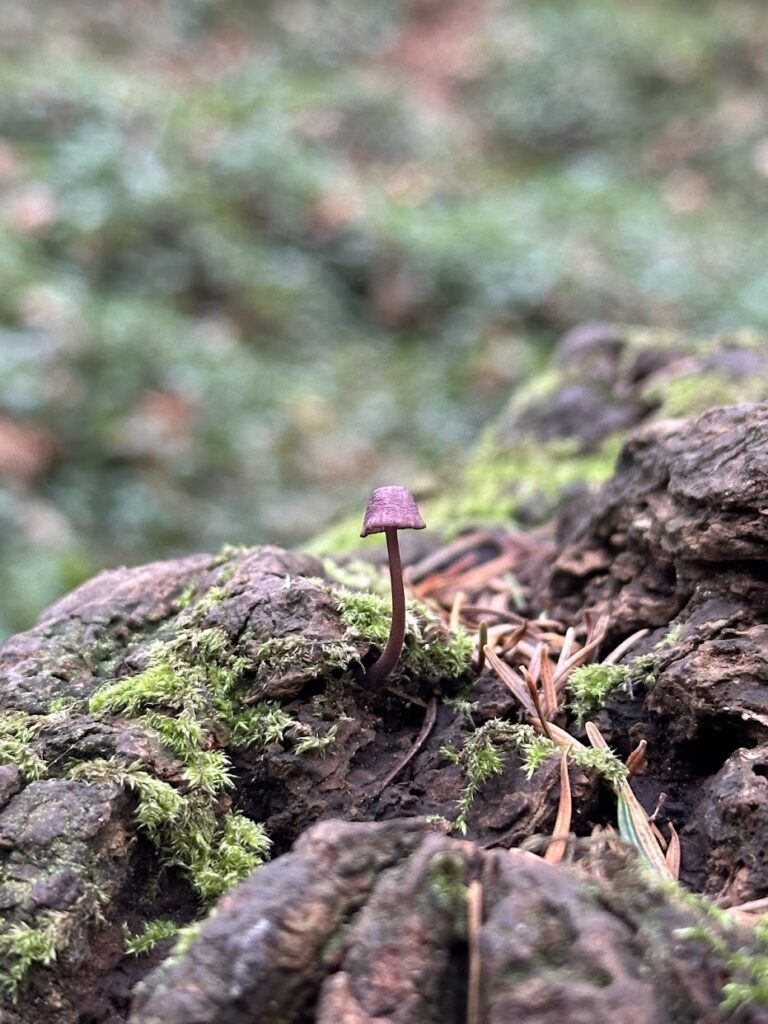
Cameras and phones can also help showcase details that may be missed. Like this tiny mushroom! I can see it with my eyes, but my phone camera helps get a closer and more focused image. Something that I may have overlooked now is its own centrepiece! I love taking photos of the cool things I find outside, and now can further appreciate how tech can supplement outdoor experiences and outdoor education.
